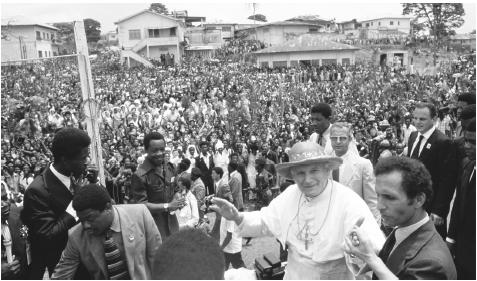This post discusses the provinces of Equatorial Guinea as well as the population data, total area, and the capital city of each.
Equatorial Guinea is divided into two regions and eight provinces (Spanish: provincias, French: provinces, Portuguese: províncias). The newest province is Djibloho, created in 2017 with its headquarters at Ciudad de la Paz, the country’s future capital.
Equatorial Guinea is divided into eight provinces:
ANNOBÓN
The capital of the province is San Antonio de Palé. The population of 2015 is 5,232. It also has an area of 17 square kilometers.
Annobón is a province of Equatorial Guinea. The province consists of the island of Annobón and its associated islets in the Gulf of Guinea. Annobón is the smallest province of Equatorial Guinea in both area and population. According to the 2015 census, Annobón had 5,314 inhabitants, a small population increase from the 5,008 registered by the 2001 census. The official language is Spanish but most of the inhabitants speak a creole form of Portuguese. The island’s main industries are fishing and forestry.
BIOKO NORTE
The capital of the province is Rebola. The population of 2015 is 299,836. It also has a surface area of 776 square kilometers.
Bioko Norte is the second-most populated of the eight provinces of Equatorial Guinea, after the Wele-Nzas province. Both the provincial capital, Rebola, and the national capital, Malabo are located here. Heavily forested with little urban development, the southern central part includes part of the Parque Nacional del Pico Basilé, a 330 square kilometers (130 sq mi) national park which was established in 2000. On the northeast coast is a hotel run by the Sofitel chain.
BIOKO SUR
The capital of the province is Luba. The population of 2015 is 34,627. It also has an area of 1,241 square kilometers.
Bioko Sur is a province of Equatorial Guinea. Its capital is Luba. It occupies the southern part of the island of Bioko, the remainder of which is part of Bioko Norte.
Part of the Parque Nacional del Pico Basilé, created in 2000, is in Bioko Sur.
CENTRO SUR
The capital of the province is Evinayong. The population of 2015 is 141,903. It also has an area of 9,931 square kilometers.
Centro Sur borders Gabon’s Estuaire Province in the southwest and Woleu-Ntem Province in the southeast, and Cameroon’s South Province in the north. Domestically, it borders Kié-Ntem in the northeast, Wele-Nzas in the southeast, and Litoral in the west.
Centro Sur contains three main towns: Akurenam, Niefang and Evinayong.
KIÉ-NTEM
Djibloho, officially the Administrative City of Djibloho, is the newest province of Equatorial Guinea, formally established by law in 2017. The administrative city was initially carved out of Añisok, a district in Wele-Nzas, on 1 August 2015, and was created to eventually replace Malabo as Equatorial Guinea’s national capital.
The capital of the province is Ebebiyín. The population of 2015 is 183,331. It also has an area of 3,943 square kilometers.
LITORAL
Litoral is the most populous province of Equatorial Guinea, recording a population of 367,348 in the 2015 national census. Its capital is Bata; the other two cities are Mbini and Kogo.
Littoral’s western border is the Gulf of Guinea coast. It is the only coastal province of Río Muni. On land, it borders the following country subdivisions:
South Province, Cameroon—north
Centro Sur, Equatorial Guinea—east
Estuaire Province, Gabon—south
The capital of the province is Bata. The population of 2015 is 366,130. It also has an area of 6,665 square kilometers.
WELE-NZAS
Wele-Nzas Province is a province in the eastern portion of continental Equatorial Guinea. Its capital is Mongomo. It borders the Equatoguinean provinces of Centro Sur to the west and Kié-Ntem to the north, with Gabon’s Woleu-Ntem Province to the east and south. As of 2015, the population of Wele-Nzas was 192,017. It derives its name from the Benito River (also called the Wele) and the Piedra Nzas mountain range.
The capital of the province is Mongomo. The population of 2015 is 191,383. It also has an area of 5,478 square kilometers.

